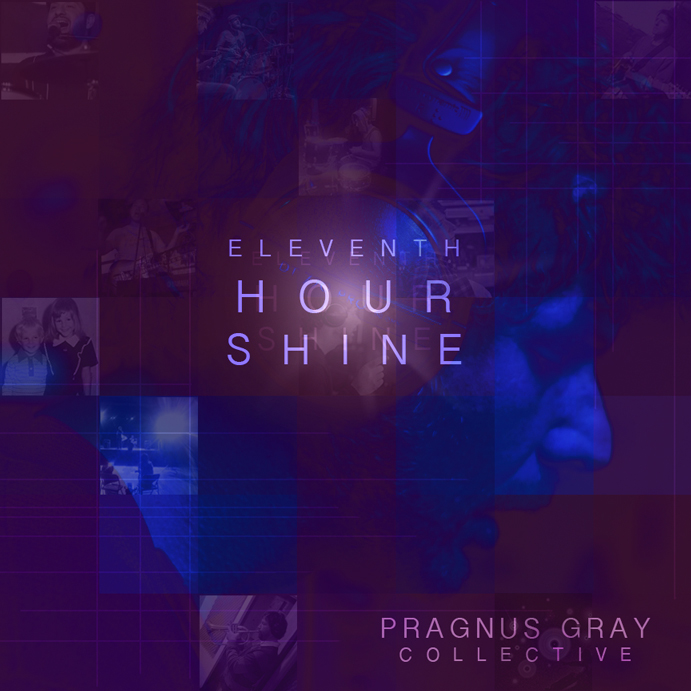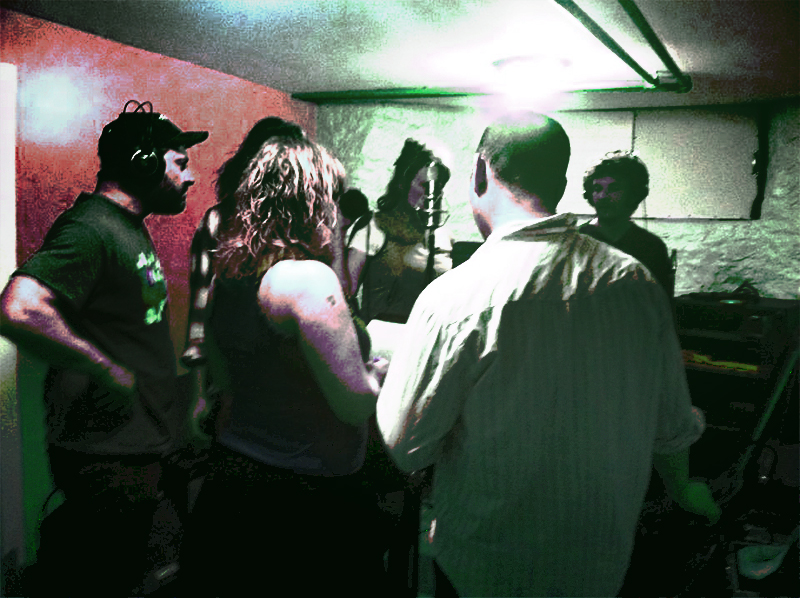CHAPTER 1
Finding the right people

This essay is primarily about the recording and design process behind the making of the album Eleventh Hour Shine, with occasional references to other projects which are related, altogether forming a whole in terms of my own process as an artist, human being, and writer. While specific observations will be made about the working dynamics involved in our collaborative process, I am choosing to set aside any emphasis on the interpersonal dynamics among those who participated in the creation of the work.
This choice is for two reasons.
First, the thesis I am developing for this essay is that a person with formal authority in a project or organization can set a tone for the work that is simultaneously human and personal, while remaining professional. The adjective professional can be defined as “being about the work” or “related to the mission.” I believe that if the professional culture of a project or organization takes into consideration the humanity of those involved, the mission will have a much better chance of succeeding.
The second reason for emphasizing the work rather than the details of the relationships among the collaborators is my dislike for making public that which should be private. I dislike gossip of all kinds, and I especially dislike the intentional placing of others in a bad light to make ourselves look or feel superior. This is not to say that there is dirty laundry around this project that I wish to hide. On the contrary, this is the most positive experience I’ve had in any project or institutional setting. The point I am making is that all relationships, new or old, have a growing edge to them. Readers with at least some maturity will recognize that beneath the surface, or behind the scenes, negotiations are always taking place between and among individuals in any group endeavor, regardless of the position each individual holds in the overall context.

In many cases, revealing these negotiations in narrative form in a public format does a disservice to people, because the outcome of successfully negotiated relationships renders the original conflicts and positions obsolete and no longer representative of the people involved. When laying things down in writing, we can sometimes cause the reader to look at things reductively and to form opinions that have little connection to current reality. This helps no one.
So, I’ve chosen to reject the “reality show” approach to documenting this project because this mentality has come to cheapen the discourse all across the country in a variety of formats, including traditional media, internet forums, barrooms and the proverbial water cooler. The result over time has been an institutionalization of ill will in our world at large, and I prefer to communicate from an altogether different space.
That said, Eleventh Hour Shine was an overwhelmingly positive experience the people involved, and I believe this is connected to the project’s original purpose.

When I decided to record the album which became Eleventh Hour Shine, I wanted to see what would happen if I consciously brought in and practiced the principles of collaboration, servant leadership, and humility to the project. In a way, this project was always about holding myself to higher standards as the chief facilitator and to nurture a culture in which others might shine without feeling eclipsed by the brilliance of that shine. When I returned from the Southwest, in the late winter of 2013, I actively sought out partners who already had this mindset naturally.
It is to my great fortune that I was able to find these people. Without a doubt, this project would never have come to fruition in the way that it did if I hadn’t been so lucky.
T. J. , Audio Engineer, Co-Producer and Friend
A major partner who entered my personal and artistic life and altered its trajectory was a slight young man of 27, Thomas T. J. Wenzl. We had known each other for a few years, mostly in casual settings such as large get-togethers and local pubs. I had always known him to be an understated yet nonetheless charismatic fellow, easily likable, and consistently meeting people where they are in a straightforward, egalitarian manner. Alongside an endearing reaching-out quality was a razor sharp intellect and a subtly persuasive way of articulating his points of view.

It is this last quality that magnetized me further towards the decision to work with T. J. in the studio. It had been a semi-long artistic courtship that began after he had seen “Pragnus Gray” perform a show at the Midway Cafe in Jamaica Plain in August, 2011. It was then that he first suggested the idea of working together, though I wasn’t sold right away, as I had become accustomed to playing instruments myself, recording and mixing onto a Mac G4 with an early version of Pro Tools (Digi 001), and wasn’t sure I wanted to make room for a creative partnership.
But, over a period of twelve months, T. J. was persuasive. Aside from showing me mixes he had done for other projects, introducing me to his own brilliant compositions, and articulating his vision for my own work, he demonstrated a high degree of thoughtfulness and sincerity. This is what ultimately won me over.
The first project we worked on was an album I had recorded and mixed over the years, called Eric Left Riverton. Though the album was already finished, there were some sound issues in some of the material, and creative opportunities that were clearly missed when I went at it alone on my Mac.
My fondest recollection of our work together with this project is T. J.’s insistence that I re-sing the lead vocal over a song called “Malaise” so that he could lay the printed reverb effect of my new take over the original lead vocal. The results of this deeply touched me as an artist, and I fell in love once again with a song I had over the years come to regard with a sense of actual malaise.
But, our creative partnership really found its bearings when we worked on a 9-minute piece called Marcel. This song marked the first time the two of us truly collaborated on a vision that I simply could not have achieved on my own. Marcel is a song about a dying man traveling to the desert to acquaint himself with True Nature under the stark spinning black skies. Throughout the song, Marcel can barely stand the contemplative atmosphere and gives into his fear of death by begging to play the same song over and over again. The end of Marcel morphs into a completely different song, Don’t Be Afraid, which, of course, is the song Marcel wants to hear.
Though the melody and lyrics of the main refrain for Don’t Be Afraid were already worked out, I didn’t know exactly what direction to take. T. J. suggested we turn the flight of fancy of this tail-end piece into a dream rock concert sequence a la Sergeant Pepper, and I immediately realized that this was the direction to take. We recorded the lead vocal and backing vocals, well past midnight, enjoying a healthy round of Jameson’s, which loosened me up to make creative vocal leaps in this fantasy song.
And that was that. Our work was done. At least I thought it was.
When we finished mixing Marcel/Don’t Be Afraid in late January, I left Boston and traveled across the country to shoot the video for the songs, and to see if there was another location in America where I might want to settle down and start a new life. Admittedly, this was a pre-midlife examination period (not a crisis. I can’t admit to such a thing on the internet) and I was essentially grabbing at straws, wondering what to do next or where I should be geographically, spiritually and professionally.
I eventually landed back on the East Coast and stayed with a few friends at a housing cooperative in Brooklyn. It was during this weekend stay that a close friend, Dave, practically demanded that I return to Boston and record an album of new material with T. J.
“Strike while the iron is hot,” Dave said.
He further explained that it was rare indeed to find partners who shared the same vision and possessed the conceptual flexibility, determination and talent to make that vision happen. Most importantly, he reminded me that T. J. and I had developed a working relationship and had come to understand each other’s habits, gifts and blind spots. I couldn’t deny his argument. I had definitely found the right recording partner.
The next morning, I made the decision to return to Boston and to record new music with someone I knew who could deliver.
